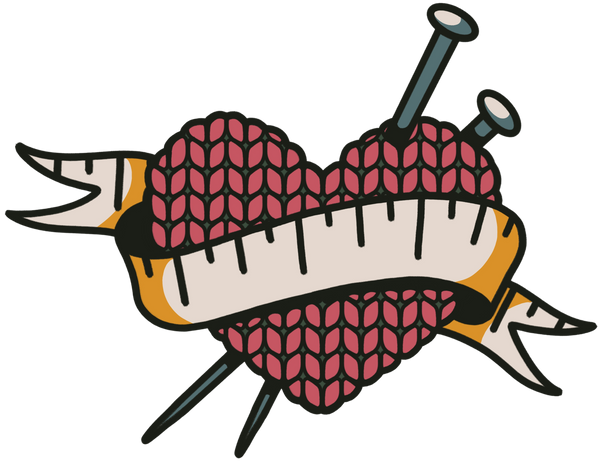
Your Guide to Knitting Set-in Sleeves

What is a set-in sleeve?
Let's start from the beginning. Set-in sleeve knit garments are constructed with an armhole and a sleeve cap. Rather than a rounder yoke (like in a raglan or circular yoke design), the upper portion of a set-in sleeve sweater is more square, with a rounded sleeve cap. This more closely mimics the actual shape of your chest and upper arm.
Since set-in sleeve garments more closely mimic the body, these garments fit better than others (when you get gauge and choose the best size!). You can achieve both a casual or a more formal look with this kind of fit, and it's much easier to customize your knit.
Key measurements for knitting set-in sleeve sweaters
Unlike some constructions, one of the most important measurements for set-in sleeves is your crossfront. Read more about taking your measurements here.
The most important measurements to take (and compare to the schematic) are:
1. Cross front: Your cross front is the distance from underarm to underarm. This measurement should closely match the cross-shoulder measurement of a set-in sleeve garment. In drop shoulder constructions, the garment will have a wider measurement at the shoulder than your crossfront.
2. Upper chest: Also called upper bust, this is the measurement that wraps around your back, up under your underarms, and then across your chest minus any breast tissue you have. One Wild patterns offer sizing guidance based on upper chest in many of our patterns. You can see what size your upper chest places you in here.
3. Upper arm: This is the widest part of your arm (which may or may not be in the middle of your upper arm!). Set-in sleeve garments aren't hard to modify for fuller upper arms, you can also adjust the sleeve depth easily if you need to.
Of course there are other measurements you'll want to address (like your armscye depth and any bust darts you may add), but these three together will get you into a well sized sweater.
Cross front is the key measurement for fitting a set-in sleeve garment. If some of your measurements are one size and some are another, choose the size that most closely matches your body's cross front measurement, and then tweak your fit in other places.
Knitting a set-in sleeve construction
Set-in sleeve garments can be knit seamed or seamlessly, like most constructions. Unlike other constructions, a set-in sleeve sweater features a body that is more square through the top. The front and back will always be knit flat and connected at the shoulder and the underarm.
In the case of the Alice Tee, you'll work completely seamlessly. Sappho's Love does include seaming the shoulders together before picking up the sleeves.
Lately, we both favor working set-in sleeves seamlessly by picking up around the armhole and working short rows to shape the cap. Some of our set-in sleeve knitting patterns are seamed, which creates a finished garment that holds its shape beautifully and fits forever. Some newer patterns might be worked in a hybrid of seamed bodies with seamless sleeves.
In the case of seamless or hybrid set-in sleeve patterns, getting the same gauge working in the round and flat is very important. Some folks will need to change needle sizes when you go from working in the round to working flat.
For more info on how to adjust your seamless set-in sleeve cap, you can visit this article!
Paywall-free educational content like this has been paid for by Ko-fi supporters. Ko-fi members contribute to community resources like this one because they believe in our mission of creating smart makers who can dismantle oppressive systems of fast fashion and the patriarchy from our craft rooms. You can find out more about Ko-fi or become a supporter here.

1 comment
XVgmHIvrLlQGaWBF